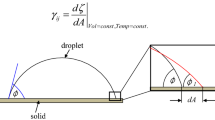Abstract
Digital microfluidics (DMF) is an emerging liquid-handling technology that enables individual control over droplets on array of electrodes. In this paper a low cost approach for development and characterization of open configured electro wetting on dielectric (EWOD) based digital microfluidic device is presented. The array of electrodes pattern with 155 μm gap is realized on copper plated printed circuit board (PCB). Biocompatible polydimethylsiloxane (PDMS) is used as dielectric as well as hydrophobic layer which is a competitive substitute of expensive materials like Teflon-AF and parylene-C. The device is tested by the in-house developed low cost droplet handling and characterization system. A contact angle is measured by curve fitting; the volume of a droplet is calculated using a novel approach based on mathematical modeling of droplet as a spherical cap. The droplet transporting and merging are successfully performed on a fabricated device and velocities for forward and reverse direction on square and interdigitated pattern are analyzed. The device is also successfully demonstrated for the mixing applications using direct statistical method.














Similar content being viewed by others
References
Abdelgawad M, Wheeler AR (2007) Low-cost, rapid-prototyping of digital microfluidics devices. Microfluid Nanofluid 4:349–355. doi:10.1007/s10404-007-0190-3
Abdelgawad M, Wheeler AR (2009) The digital revolution: a new paradigm for microfluidics. Adv Mater 21:920–925. doi:10.1002/adma.200802244
Au AK, Lai H, Utela BR, Folch A (2011) Microvalves and micropumps for BioMEMS. Micromachines 2:179–220. doi:10.3390/mi2020179
Baird ES, Mohseni K (2007) A unified velocity model for digital microfluidics. Nanoscale Microscale Thermophys Eng 11:109–120. doi:10.1080/15567260701337514
Berthier J (2013) Micro-drops and digital dicrofluidics, 2nd edn. Elsevier, London, pp 232–242
Caputo D, de Cesare G, Lo Vecchio N et al (2014) Polydimethylsiloxane material as hydrophobic and insulating layer in electrowetting-on-dielectric systems. Microelectron J 45:1684–1690. doi:10.1016/j.mejo.2014.05.016
Cho SK, Moon H, Kim CJ (2003) Creating, transporting, cutting, and merging liquid droplets by electrowetting-based actuation for digital microfluidic circuits. J Microelectromech Syst 12:70–80. doi:10.1109/JMEMS.2002.807467
Choi K, Ng AHC, Fobel R, Wheeler AR (2012) Digital Microfluidics. Annu Rev Anal Chem 5:413–440
Fair RB, Khlystov A, Srinivasan V et al (2004) Integrated chemical/biochemical sample collection, pre-concentration, and analysis on a digital microfluidic lab-on-a-chip platform. In: Smith LA, Sobek D (eds) Proceedings of SPIE, pp 113–124
Gong J, Kim CJ (2008) Direct-referencing two-dimensional-array digital microfluidics using multilayer printed circuit board. J Microelectromech Syst 17:257–264. doi:10.1109/JMEMS.2007.912698
Lee J, Moon H, Fowler J et al (2002) Electrowetting and electrowetting-on-dielectric for microscale liquid handling. Sensors Actuators, A Phys 95:259–268
Lippmann G (1875) Relation entre les phénomènes électriques et capillaires. Ann Chim Phys 5:494–549
Liu H, Dharmatilleke S, Maurya DK, Tay AAO (2009) Dielectric materials for electrowetting-on-dielectric actuation. Microsyst Technol 16:449–460. doi:10.1007/s00542-009-0933-z
Mata A, Fleischman AJ, Roy S (2005) Characterization of polydimethylsiloxane (PDMS) properties for biomedical micro/nanosystems. Biomed Microdevices 7:281–293. doi:10.1007/s10544-005-6070-2
Mugele F, Baret J-C (2005) Electrowetting: from basics to applications. J Phys: Condens Matter 17:R705–R774. doi:10.1088/0953-8984/17/28/R01
Nelson WC, Kim C-J (2012) Droplet actuation by electrowetting-on-dielectric (EWOD): a review. J Adhes Sci Technol ahead-of-p: 1–25. doi: 10.1163/156856111X599562
Nguyen N-T (2011) Micromixers: fundamentals, design and fabrication. William Andrew, Norwich
Paik P, Pamula VK, Pollack MG, Fair RB (2003) Electrowetting-based droplet mixers for microfluidic systems. Lab Chip 3:28–33. doi:10.1039/b210825a
Pollack MG, Shenderov AD, Fair RB (2002) Electrowetting-based actuation of droplets for integrated microfluidics. Lab Chip 2:96–101. doi:10.1039/b110474h
Quinn A, Sedev R, Ralston J (2005) Contact angle saturation in electrowetting. J Phys Chem B 109:6268–6275. doi:10.1021/jp040478f
Saeki F, Baum J, Moon H et al (2001) Electrowetting on dielectrics (EWOD): reducing voltage requirements for microfluidics. Polym Mater Sci Eng 85:12–13
Song JH, Evans R, Lin YY et al (2009) A scaling model for electrowetting-on-dielectric microfluidic actuators. Microfluid Nanofluidics 7:75–89. doi:10.1007/s10404-008-0360-y
Srinivasan V, Pamula V, Pollack M, Fair R (2003a) A digital microfluidic biosensor for multianalyte detection. In: The sixteenth annual international conference on Micro Electro Mechanical Systems, 2003. MEMS-03 Kyoto. IEEE, pp 327–330
Srinivasan V, Pamula V, Pollack M, Fair R (2003b) Clinical diagnostics on human whole blood, plasma, serum, urine, saliva, sweat, and tears on a digital microfluidic platform. In: 7th international conference on Micro Total Analysis Systems (Micro TAS). pp 1287–1290
Srinivasan V, Pamula VK, Fair RB (2004) Droplet-based microfluidic lab-on-a-chip for glucose detection. Anal Chim Acta 507:145–150. doi:10.1016/j.aca.2003.12.030
Acknowledgments
The authors acknowledge the support of NPMASS/ADA for providing necessary funding to develop the low cost microfluidic characterization setup at VNIT Nagpur on which all the above experiments are performed. The authors are also thankful to Hareesh Reddy for setting up the experiment of contact angle measurement and Priyanka Onkar for designing the complete electronics system. The help provided by Muskan Agrawal for mixing efficiency calculations is also acknowledged.
Author information
Authors and Affiliations
Corresponding author
Electronic supplementary material
Below is the link to the electronic supplementary material.
Rights and permissions
About this article
Cite this article
Jain, V., Raj, T.P., Deshmukh, R. et al. Design, fabrication and characterization of low cost printed circuit board based EWOD device for digital microfluidics applications. Microsyst Technol 23, 389–397 (2017). https://doi.org/10.1007/s00542-015-2680-7
Received:
Accepted:
Published:
Issue Date:
DOI: https://doi.org/10.1007/s00542-015-2680-7




